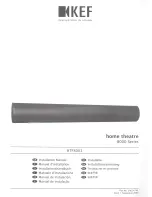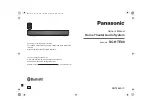
Rack Rail
M-20
Amplifier
Front Panel
Screws
Insulating
Washers
Fig. 1: Rack Mounting Detail
INTRODUCTION:
Thank you for selecting and purchasing the M-20. Your studio monitors are a critical element in the
countless decisions made during recording, mixing, and mastering and must deliver a transparent,
neutral sound so you have the information you need to choose and place microphones, set eq’s, balance
mixes; ie, to deliver exceptional product. Multiple M-20’s deliver state-of-the-art multi channel
monitoring capability.
If you require assistance at any time during or after the setup process, call our Customer Service Hot Line
at 1-800-NHT-9993 (648-9993). You can also visit our web site at www.nhtpro.com for more in-depth
technical information.
GETTING STARTED:
The M-20 is unique in that it combines a dedicated control amplifier with a separate loudspeaker cabinet,
using controlled impedance cables that actually form part of the crossover network. By designing the
system as an integral package of control amp, cables, and monitor, many of the advantages of self-
powered speakers can be realized without the possible attendant performance compromises of fully
integrated designs.
WARNING: The M-20 monitor speaker must only be used with the M-20 Control Amp,
cables, and vice versa.
The following are included in the Control Amplifier carton:
1 - Control Amplifier
1 - 20' Monitor Output Cable
1 - 6' IEC Power Cord
4 - 10-32 Rack Mounting Screws
1 - Warranty Registration Card
8 - Plastic Insulating Washers
INITIAL INSTALLATION:
The M-20 Control Amplifier may be used on a shelf, or mounted in a standard 19” equipment rack using
the screws and washers supplied. One vertical rack space is required, but we recommend you leave at
least one additional open space above and below the M-20 Control Amplifier for improved cooling, as
you would with any high power amplifier. For table or shelf use, the four feet
MUST
remain attached
to allow for air circulation. As a starting point for speaker placement, position all M-20 monitors
equidistant from the listening position. For more detailed speaker placement information see page 7.


























